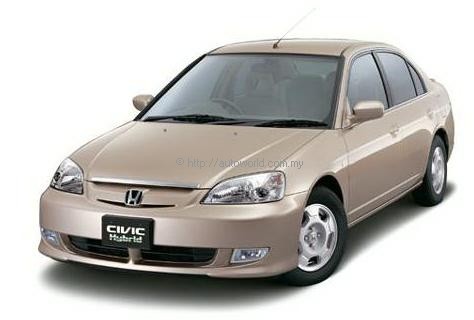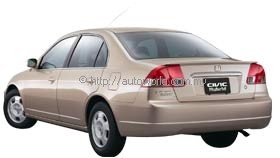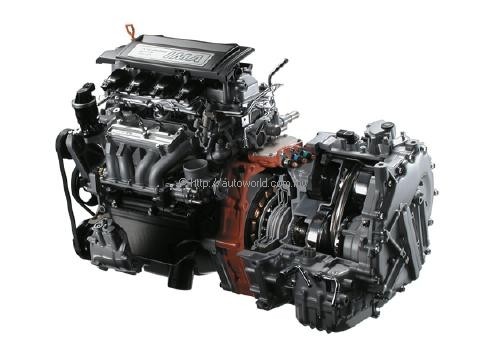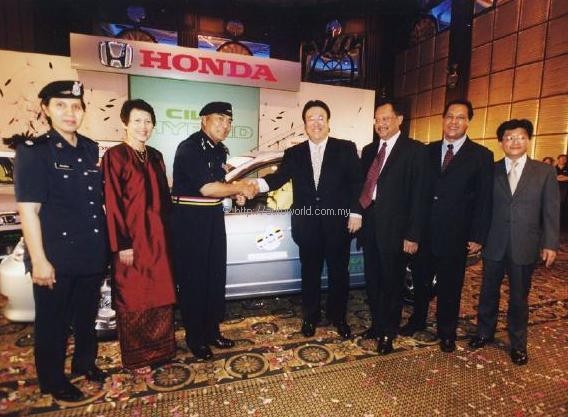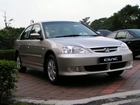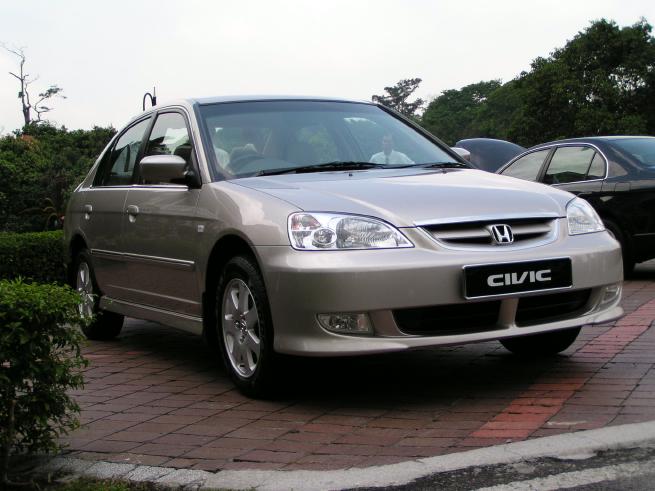Honda’s Eco-Friendly Civic Hybrid
Since the pollution crises of the 1960s and the energy crises of the 1970s, carmakers have been actively engaged in finding alternative propulsion systems for cars which pollute the air less and also use less fossil fuel since such fuel is not going to be available forever.
Many solutions have been investigated and expensive prototypes built. Today, the most promising is the fuel-cell which is a spin-off from the space program; using hydrogen for a chemical process, electricity can be generated in sufficient amounts to power electric motors and drive cars. There is virtually no noise and more importantly, only water vapour is generated (which could well mean more rain if there are millions of such cars around!).
Because the technology is still under development, the cars are very expensive. Manufacturers like Honda, Toyota and the Big Three American companies have said that they could start offering fuel-cell cars by the second half of the decade and some have even begun fleet trials in Japan and the USA.
The technology is promising but the problem will be in establishing the infrastructure for supplying hydrogen to the cars. The present infrastructure of petrol stations is the result of many decades and provides the convenience to motorists when they need fuel. It will be a costly exercise for the companies that supply hydrogen to set up stations and they will want some assurance that there will be enough demand. One can see that such a move is not easily initiated: Petronas has been wary in expanding its NGV network nationwide because of the limited demand.
Meanwhile, Honda and Toyota have successfully developed a hybrid concept which should be suitable as a transitional system. It employs a small petrol engine and an electric motor which provides brisk performance. Because the petrol engine is small and optimized for fuel efficiency, it burns very cleanly so pollution is minimal and it also sips fuel. Testing by US authorities has shown that it can cover over 1000 kms on a tank of fuel.
While Toyota has so far focused on a sedan bodystyle with its Prius (now in the second generation), Honda started off with the sleek Insight which introduce the Integrated Motor Assist (IMA) hybrid system. This was followed by the Civic Hybrid which is a Civic Sedan with a more advanced IMA under the bonnet. This latest IMA uses a 4-cylinder 1339 cc VTEC engine with two valves per cylinder. It also has the dual spark plug i-DSI (Dual-point Sequential Ignition) system which enhances combustion efficiency and is found in the City.
The ‘assist’ part by the electric motor occurs when stronger acceleration is needed or the car is driven up a slope, providing a 9.5% increase in power and 21% increase in torque. In fact, at 1000 rpm, there is 66% more torque available than with a conventional engine of similar displacement. With the IMA in operation, the powerplant produces 62.5 kW/85 kW at 5700 rpm but this can rise to 68.4 kW/93 bhp when you floor the pedal. Likewise, peak torque is 118 Nm at 3300 rpm but can be boosted to 142 Nm at 3000 rpm (a bit more for manual transmission and at a lower rpm). Transmission options for the Civic Hybrid are 5-speed manual and continuously-variable transmission (CVT).
While the IMA contributes substantially to the exceptionally low fuel consumption of 29.5 kms/litre (Honda tests based on the Japanese 10-15 cycle), the aerodynamics of the car have also been honed to keep air resistance way down. Besides being lower, covers have also been added to the underside of the car to smoothen airflow below the car.
 |
| Where the Civic Hybrid differs from the standard Civic |
The cabin layout is the same as the latest Civic but the instrumentation is special to this model with an IMA meter to the right which indicates the operation of the system. The blue calibrations and digits are also in blue while in the latest Civic, there is only a blue ring around the meters.
Since the same platform is used, the roominess of the cabin is maintained and with the innovative flat floor construction, legroom is generous for a car this size.
The 144V Ni-MH battery is stored behind the rear seat and is constantly recharged while the car is in motion and the regenerative braking system also used braking energy for recharging. This means that there is no need to recharge the battery periodically, something which has been required for pure electric cars and made them less popular.
To minimize power losses, an electric motor is used to provide power assistance to the rack and pinion steering system. The suspension system is the same as other Civics with MacPherson struts in front and the reactive-link double wishbone layout at the rear. However, as the battery pack adds around 90 kgs to the rear end of the car, re-tuning of the suspension was necessary.
As it uses the same body structure as the normal Civic, the Civic Hybrid also has Honda’s G-CON safety technology which provides high levels of protection for occupants during a collision and most types of accidents. G-CON construction even provides protection against rear-end collisions at impact speeds of up to 50 km/h.
Like Toyota, Honda believes the hybrid system is the way to go in the short-term and has been introducing it in more markets around the world. There are plans to offer the model in Malaysia before the middle of 2004 but there are still pricing issues to contend with. Being a CBU model, it is subject to high import tax and as it is already more expensive than a normal Civic, it will be very expensive and not sell in significant numbers. If the price is not close to that of the normal Civic, the Civic Hybrid would end up as a ‘novelty’ for the rich.
“We hope that we can convince the government to provide some sort of tax incentives for the Civic Hybrid – as what is done in Japan and Singapore – so that it will not be so expensive. After all, it is proven to be exceptionally environment-friendly and also uses much less fuel than conventional petrol-engined cars,” Seiji Kuraishi, MD/CEO of Honda Malaysia told AUTOWORLD.COM.MY.
Mr Kuraishi said that in terms of maintenance, the Civic Hybrid is not as complex or demanding as many may think because many of its parts are similar to the conventional Civic Sedan. The hybrid powerplant has also proven reliable and durable as the model was introduced in Japan and the USA some time ago and a fleet is also used for a Honda-supported community transport project in Singapore.
“It is also possible for us to assemble the Civic Hybrid locally if necessary but there must be sufficient volume, of course. Nevertheless, I hope that we can obtain some sort of reduction in import tax for hybrid vehicles from the Malaysian government so that more people will use such cars and help to reduce pollution while also helping conserve energy resources”, he said.
In the meantime, Honda Malaysia has provided two Civic Hybrids to the Malaysian police and it has been learnt that one of the units will be utilized by the “Victim Care Unit,” a unit dedicated to the care of victims who are women and children. This unit was expanded recently due to the alarming rise of crimes against women and children. Needless to say, as part of the transport fleet, the Civic Hybrids will be used a lot and provide feedback to Honda Malaysia on performance in Malaysian conditions.
Chips Yap had a brief drive in the Civic Hybrid in early 2002 and you can click on the link below to get his impressions.




